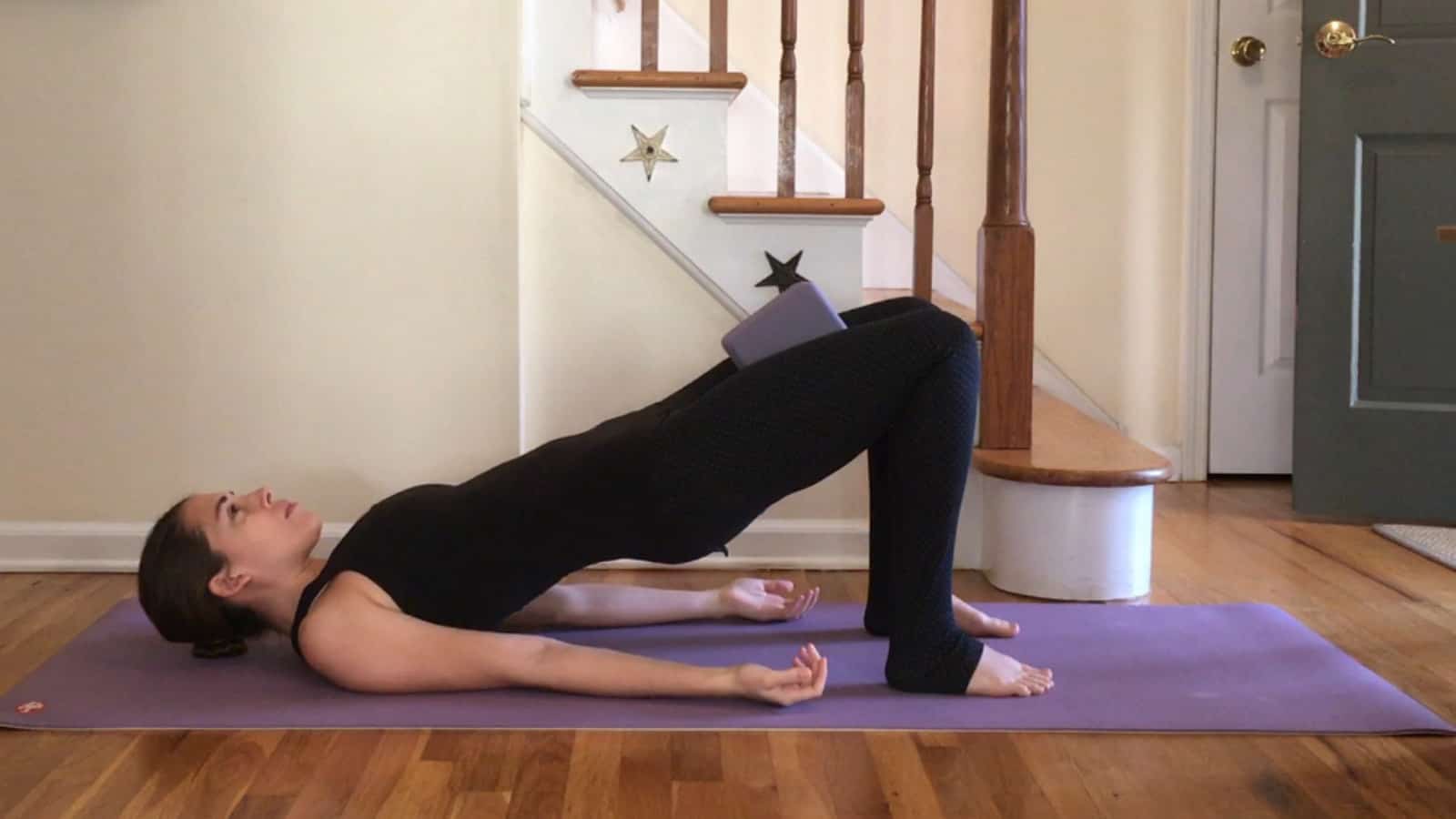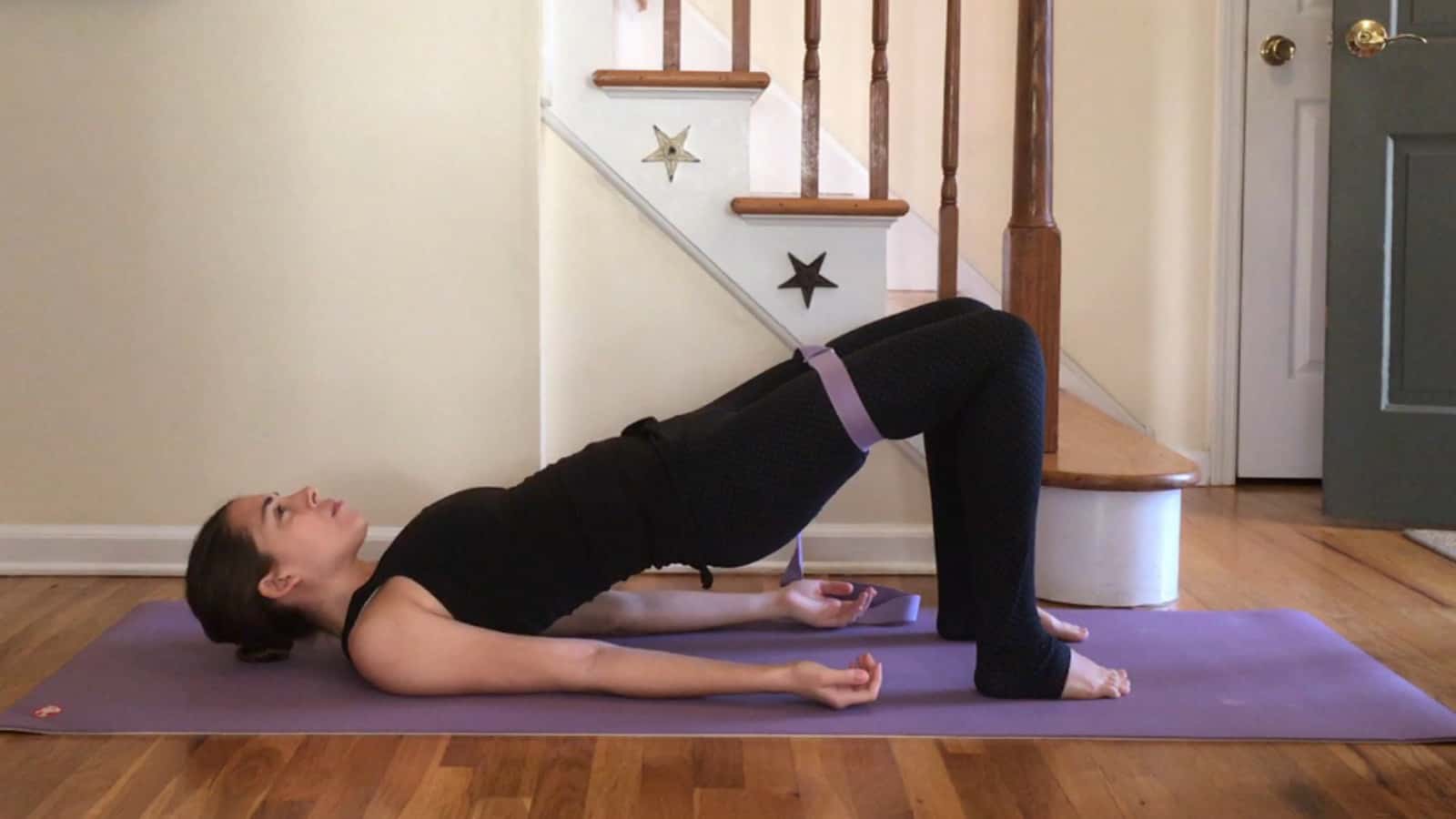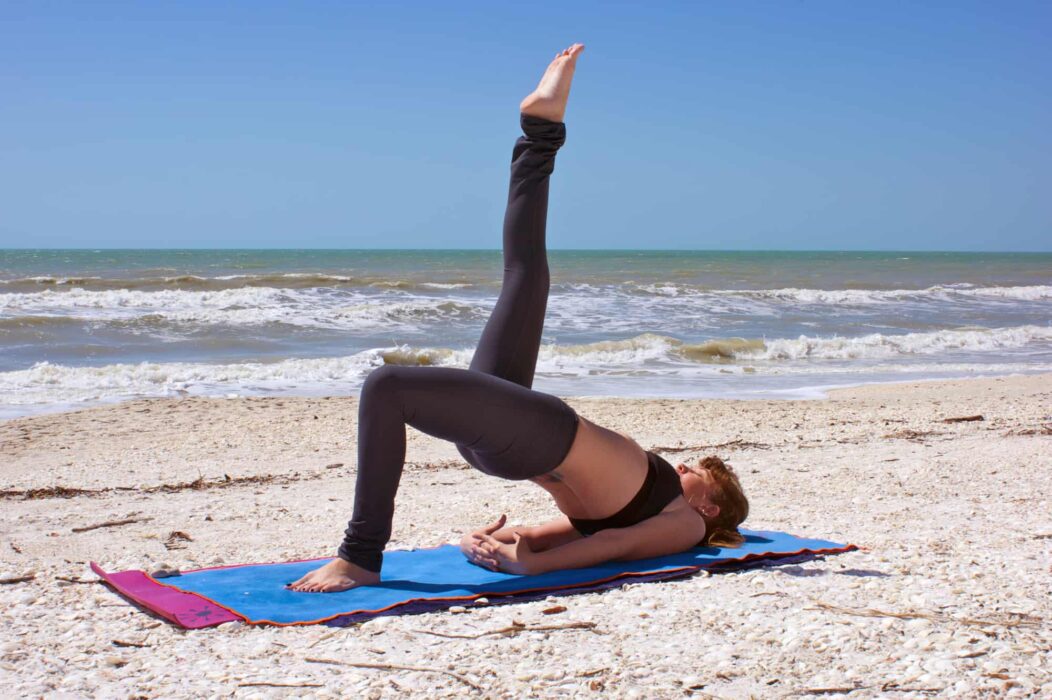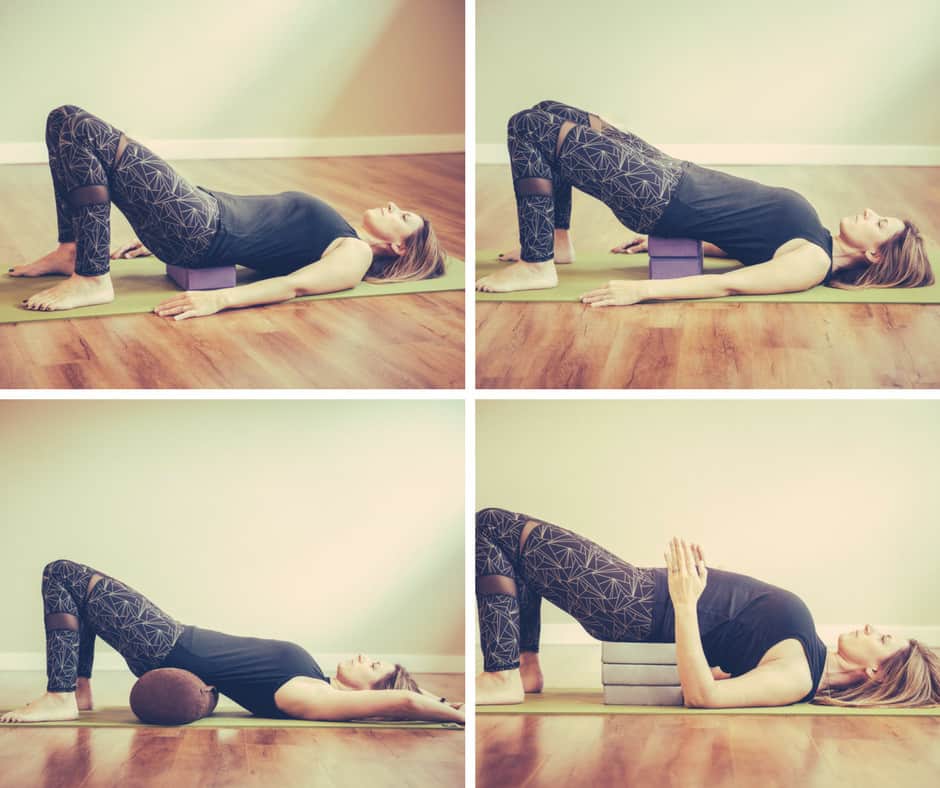As with other holds, the Bridge pose can be boring if you practice it often. So, if you ever asked yourself how do I modify the Bridge pose, you’ve come to the right page. Here, we’ll explain some awesome ways to perform Bridge pose.
We’ve already given the basic breakdown of this pose earlier. So follow the instructions from this page if you’re a novice.
If you’re in the intermediate/advanced yogi category, let’s see how to make this backbend beneficial.
1) Bridge Pose for Thighs’ Muscles
To activate thighs in the Bridge pose, you’ll need a block and a yoga belt. However, these props can be easily replaced by a thick book and a waistband you have at home.
First, grab a block and place it between your thighs; hold it with your knees. Like this, you activate the adductors. Adductors are leg muscles that draw your leg towards the body’s midline. Also, they help to draw the leg across the midline as if you were about to cross your legs while sitting at the table.
By pressing through the knees, you make adductors work harder. Here’s how it looks:

As you may already know, thighs also have abductors (antagonist muscles to adductors). This group of muscles allows you to move the leg away from the body midline. You can activate them in the Bridge pose by using a strap or yoga belt looped around both thighs like this:

When in the pose, push both legs away from the midline to challenge your abductor muscles more.
Start with holding each modification for 30 seconds, with time increase the duration to 3 minutes. At this point, you may already have this burning feeling in your thighs muscles. If that’s already not so exciting to you, alternatively, add motion to these modifications. For example, lift your pelvis and put it down simultaneously, pressing the block or working with the strap on your thighs.
Glute Bridge Exercises for a Firm Peach
2) Try Bridge Pose with One Leg Up
For more advanced practitioners, this option is a way to strengthen the glutes and challenge the core muscles.
To get into this modification:
- Start in a basic Bridge pose.
- As you inhale, lift one of the knees towards the torso.
- Straighten the leg as you exhale and point your toes up into the ceiling.
- Watch out for over bending in the lower back.
- Engage your glutes to support the shape of the asana.

Hands are lying on the mat alongside the body.
Alternatively, hold both hands under your lower back for support.

On the next exhale, release and repeat the action with the other leg. Make sure you do the same number of repetitions or the same amount of holding the static shape of this posture modification for each leg.
3) Try Bridge Pose with Mula Bandha
In this pose, kegel exercises will be beneficial for women’s and men’s health. In Yoga, we call them bandhas or locks. Mula bandha (or Root lock) is the one to try in the Bridge pose. Bandha can still be performed whether you use the Bridge pose as a static shape or in motion. Mula bandha is about contracting and releasing your pelvic floor muscles. This should be coordinated with your breath and movements in the asana.
When Should You Do Mula Bandha?
Depending on how you practice the Bridge pose, you choose when to add the bandha. I’d recommend getting into the basic Bridge start doing bandha from there.
Also, you can do bandha as a part of your whole sequence that combines Bridge pose and other poses.
How to Do Mula Bandha?
Take a few moments to bring awareness to your lower spine areas and pelvis. Then, follow the sound of your breath to concentrate more.
Exhale and contract your pelvic muscles, hold for 5 counts, inhale and release the muscles. Repeat the same action for the subsequent breath cycles.
NOTE: It may not be comfortable for women to use this practice during their period. So be conscious about your body signals.
This type of bandha improves circulation in the lower back region and strengthens pelvic floor muscles. It’s also known as a great libido booster! So notify your sexual partner about such possible effects of yoga practice.
Before you go,
Bridge pose is also known as a restorative asana. If you feel overwhelmed with your day or just tired, use this pose to relax.
For this, get a yoga block or yoga bolster underneath your sacrum and let go of the tension. Let gravity do the hard work.

Inhale and imagine how you exhale the tension gathered inside your body. Stay in the asana from 5 to 15 minutes. Or longer if your day was hilariously tough on you.